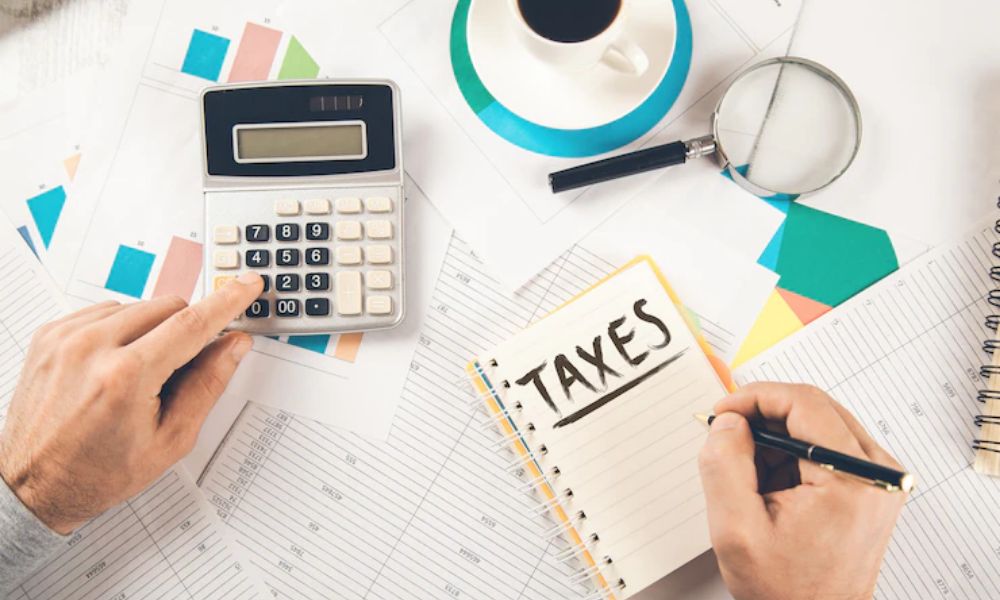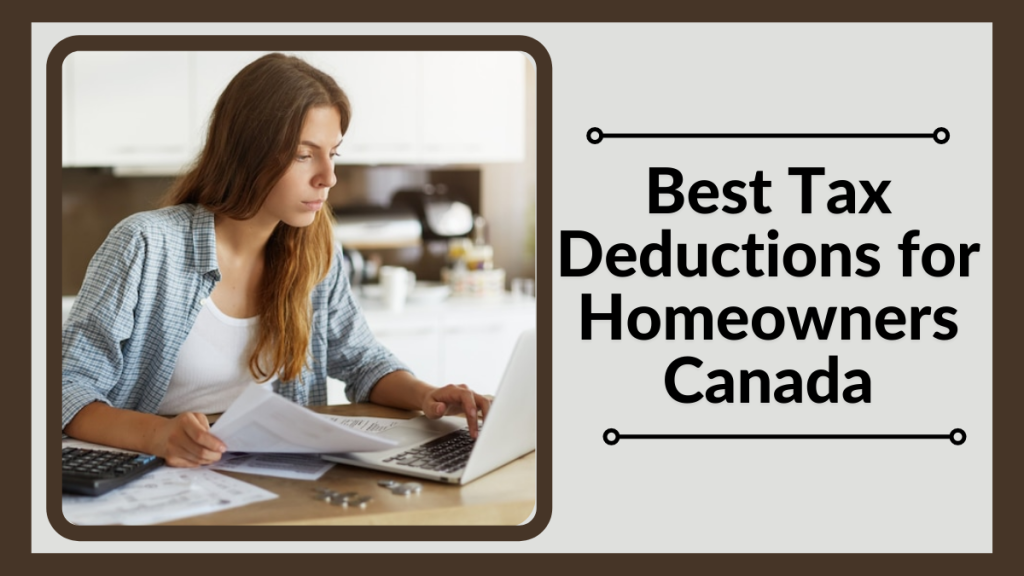This is the season. Tax season that is. And while the tax return process can be a painful one, it can also be rewarding. If you are a Canadian Homeowner, there are several different tax deductions that you might be able to claim. And we all know, the more deductions, the better!
So we’ve created an article that outlines some of the best tax deductions for Canadian Homeowners to help put you on the right path this tax season.
So read on to see if any of these tax deductions are right for you. And if there are, then claim away!
The Home Buyer’s Amount
If you are a first-time home buyer, then you can claim the Home Buyers’ Amount. This tax credit was formerly known as the Home Buyer’s Tax Credit, but now it’s just called the Home Buyer’s Amount credit. If you or your spouse purchased a qualifying home in the last year, then you can claim $5000 for the purchase of that home.
Please note this tax credit is for FIRST-TIME home buyers. You could not claim this credit if you lived in a different home that was owned by either you or your spouse in the qualifying year or in the four years previous.
The home has to be a ‘qualifying home,’ although most homes qualify. To be a qualifying home, the home must be a single-family house, a semi-detached house, a townhouse, a mobile home, a condo unit, or an apartment in a duplex, triplex, fourplex, or apartment building. So as you can see, pretty much any home will do. This also includes homes under construction, so even if you aren’t technically living in your home yet, but own it, you can still claim the Home Buyer’s Amount.
How Do I Claim the Home Buyer’s Amount?
The credit can be split between any and all who own the home, as long as you don’t claim more than the $5000 in total. The Home Buyer’s Amount is claimed on line 31270 of your tax return.
The Gst/Hst New Housing Rebate
If you bought a new home in the qualifying year, then you should take advantage of the GST/HST New Housing Rebate. This rebate allows you to claim some of the GST/HST you paid for your new home. The rebate also includes a home that was substantially renovated, and homes include modular homes, mobile homes, and even floating homes. You can recover EITHER some of the GST or the federally paid HST.
You can claim this rebate if you purchased a new house, constructed a new house, or renovated a house. You can also claim it if you purchased shares in a co-op complex and the unit is your primary place of residence. If you constructed or renovated your home, the fair market value of the home once construction and Renos are complete cannot exceed $450 000, though, so that’s something to keep in mind.
A ‘substantial renovation’ includes things like a major addition that doubles the living space of your house, like adding a second story. Adding a room or something like a porch, one-bedroom, or a family room is NOT considered a major renovation.
How Do I Claim the GST/HST New Housing Rebate?
Generally speaking, you don’t have to send any supporting documents along when you claim the GST/HST New Housing Rebate, BUT you will need to keep original invoices that have your name (the claimant or the names of the co-owner)s and any other documents you used to fill out the form for SIX years after you claim this rebate, as well as a copy of the filled out form.
You will need to fill our Form GST191, GST/HST New Housing Rebate Application for Houses Purchased From a Builder (if that’s the case), or Form GST191, GST/HST New Housing Rebate Application for Owner-Built Houses (if the house was built or renovated by you).
You can find the forms and more information here
Home Accessibility Tax Credit (Hatc)
You can claim up to $10 000 in expenses if you have a home that was renovated to make it safer or more accessible for someone 65-years of age or older, or if you renovated it to make the home safer and more accessible for someone who is disabled. The credit can be claimed by EITHER the eligible individual or by the person who looks after the individual.
The Home Accessibility Tax Credit is non-refundable, so you can receive “15% of the costs of renovations as a reduction on your taxes.” This credit was introduced in 2016, and renovations that are eligible for this deduction are listed as: a renovation that allows the qualifying person to be more mobile with the eligible dwelling, a renovation that allows the qualifying person to gain access to the dwelling, a renovation the reduces the risk of harm or injury to the qualifying individual while living in the dwelling or gaining access to it.
The house must be the primary residence of the eligible person, and qualifying expenses generally include purchases or renovations that will become a permanent part of the house. Some examples of expenses that can be claimed are things like the cost of grabs bars and handrails, walk-in tubs, making a doorway wider for a wheelchair, or lowering cabinets for better accessibility.
It does not include things like household appliances, electronic home-entertainment devices, costs associated with housekeeping, security, outdoor maintenance, or any costs incurred to gain income, produce income, or primarily increase the value of the house. You will need to provide documentation of the expenses, so you need to keep all your receipts, proof of payments, contracts for work, delivery slips, and the like.
How Do I Apply for the Home Accessibility Tax Credit?
You can claim the Home Accessibility Tax Credit on line 31285 of your tax return. You must also complete Schedule 12 for Home Accessibility Expenses for your province. You will need to be very thorough and provide dates, types of expenses, and the names of contractors who do the work for you. You will not need to submit receipts, but the CRA can request them at a later date; it’s best to hold on to them just in case.
To find out more, you can visit this site
Business-Use-of-Home-Expenses
The pandemic has affected us all, and during the pandemic, many of us were forced to work from home. Luckily, if that was the case for you, you can actually claim some of the costs incurred from working from you. You can also claim some of these costs if you are normally working from home, such as an entrepreneur.
The Business-Use-of-Home Expenses is a tax deduction that allows you to claim some of the costs of running a home office. It is available to people who are self-employed, people who are commissioned employees, or people who are professional workers that mainly work from home.
As a rule of thumb, the amount that you can claim is directly linked to the size of your home and the size of the space you use for your business. To figure out how much money you can claim, you need to know the percentage of space you use for your business in relation to your entire house. For example, if your home office occupies 10% of the total square footage of your home, then you can claim 10% of your home’s total costs under the Business-Use-Of-Home-Expenses.
Things you can claim include things like your electricity, water, heat, home insurance, mortgage interest, and property taxes. So if your home’s total for all these things has a monthly price tag of $5000, and your home office accounts for 10% of your home’s space, then you can claim $500/month for Business-Use-Of-Home expenses, or $6000 in total for the year as a tax deduction. The deduction amount can be tricky, though, because you can claim money for the time you are using the workspace. You must be using the space ONLY to earn your business income, and your deduction must be reasonable. You also CAN NOT claim more than your net income. If you want to take advantage of this tax deduction, then it’s best to visit the CRA website, where this is more information.

How Do I Claim the Business-Use-of-Home-Expenses?
You will need to report this deduction on Form T2125, Statement of Business or Professional Activities. For more information, you can visit here
Moving Expenses for Homeowners
If you need to relocate for a new job, and you need to move more than 40 kilometers away from your current location, you can claim some of your moving costs. Some of the costs you can claim include things like hotel bills, fees for a moving company, transportation costs, storage costs, and even travel expenses like meals, the cost of utility hook-ups and disconnections, and the cost of replacing your ID. You can also claim temporary living expenses for up to 15 days if you find yourself in-between homes, as well as some costs associated with listing/selling your old home and buying your new one.
This deduction can only be claimed if you HAD to work, move for work, or to attend school.
And, if you are a homeowner, there are even more tax deductions for you. If you made reasonable efforts to sell your old home, but it remained vacant, you can claim up to $5000 for the costs of maintaining your old, vacant home. The costs for maintaining your vacant home include things like property taxes, the cost of heating and utilities, interest, and insurance premiums. In fact, there are a lot of costs you can claim. For a full list of costs, you can visit the CRA website.
How Do I Claim My Moving Costs on My Tax Return?
To claim the moving costs tax deduction, you will need to fill our Form T1-M, Moving Expenses Deductions. As always, it is in your best interest to keep all the receipts for anything and everything you are claiming. While you may not be required to submit them with your tax return, the CRA can ask you for your receipts at a later time. You can find more information here
Rental Income Deductions
If you are a homeowner and you have a rental unit, you can deduct some of the costs involved with your rental unit. You can claim some allowable expenses that include costs incurred by things like advertising fees, insurance, and property taxes. In fact, the CRA website states that you can deduct ‘any reasonable expense you incur to earn rental income.’
The expenses are divided into two types: current expenses and capital expenses. Current expenses are short-term, like painting the house. At the same time, capital expenses have a longer-lasting benefit, like renovations that improve your property. In any case, some of the expenses you can deduct include: repairs and maintenance, travel to and from the rental property, utilities, management and administration fees, professional fees (like accounting or legal fees), etc. This list is not exhaustive, however.
How Do I Claim Rental Income Deductions?
You can claim your rental income deductions of Form T776 of your tax return. To find out more, visit here
Medical Expenses Tax Credit
The Medical Expenses Tax Credit is similar in some ways to the Homeowner’s Accessibility Tax Credit in that it allows you to claim a tax credit refund for costs associated with making your home more accessible. However, the medical expenses tax credit is specific to medical expenses for either the homeowner or for the homeowner’s qualifying dependent. You can only claim expenses that you were not reimbursed for and that you have not claimed anywhere else on your tax return.
There is a very long list of qualifying expenses on the CRA website, but some of the more common ones are things like the installation of air conditioners, air filters, audible signal devices, braille printers, and power-operated chairs.
How Do I Claim Medical Expenses?
Medical expenses are claimed on line 33099 or line 33199 of your tax return, depending on whom you are claiming the expenses for. More information on medical expenses tax deductions can be found here
In conclusion, if you are a Canadian homeowner, there are several different types of tax deductions that you might be able to claim! Some of the deductions are somewhat complicated, some are simple, but they all have the ability to put more money in your pocket, so if you think you might be able to claim any of the deductions on this list, then find out more and claim away!














Leave a Reply